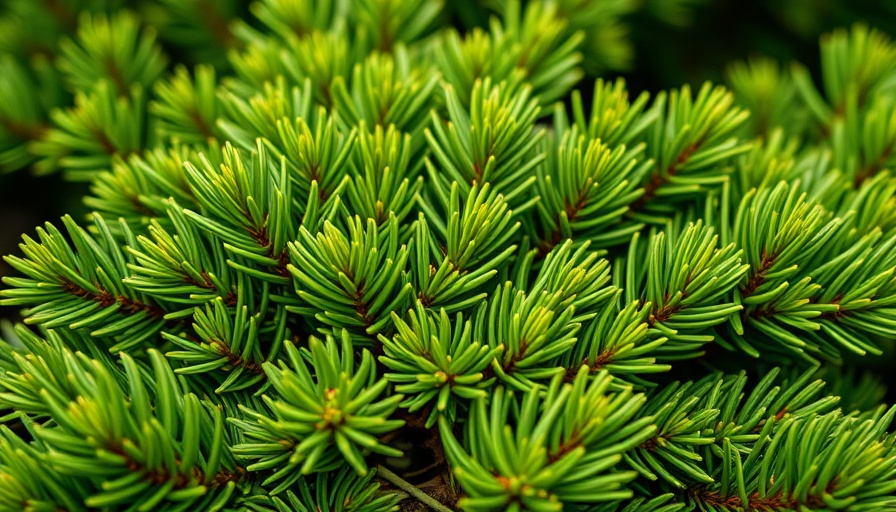
Unlocking the Beauty of Japanese Black Pines in Your Landscape
Japanese black pine (*Pinus thunbergii*) is not just a tree; it's a statement piece in any garden. With its dark gray to black bark, long paired needles, and picturesque growth habit, this evergreen conifer is both stunning and highly valued in horticulture. Its asymmetrical nature captures the essence of Japanese garden aesthetics, making it a captivating focal point, especially when pruned in the art form of niwaki or bonsai.
A Versatile Tree for Every Garden
From coastal landscapes to urban settings, the Japanese black pine adapts gracefully to varying environments. In its native habitat, it can soar to heights of up to 130 feet; however, in cultivated spaces, you can expect a more manageable size ranging between 20 and 60 feet. This adaptability makes it an excellent choice for those looking to add dimension and interest to their landscaping. Additionally, with several dwarf cultivars available, these pines can serve as striking features in smaller spaces without overwhelming them.
Caring for Your Japanese Black Pine: Essential Tips
To thrive, Japanese black pines prefer full sun and well-draining soils with a slightly acidic pH of 5.0 to 6.5. Regular maintenance is vital for your tree's health and appearance. This includes proper pruning to promote an appealing shape and remove any dead or diseased branches. Monitor for pests and diseases, keeping a vigilant eye for common issues such as pine beetles and needle blight. A balanced organic fertilizer application in early spring can also encourage robust growth and ensure your tree stays healthy and vibrant.
The Aesthetics of Growth: Cultivars and Their Appeal
Choosing the right cultivar of Japanese black pine can significantly affect your garden's look and feel. Various cultivars boast distinctive growth patterns, needle lengths, and color variations. Exploring these options not only enhances your landscaping ideas but allows you to express your garden's personality. For example, 'Shundei' features a dense, rounded crown ideal for creating a lush, green backdrop.
The Role of Japanese Black Pines in Modern Gardening
Incorporating Japanese black pine into contemporary landscaping designs can create visually striking contrasts and serve as a backdrop for seasonal flowers and shrubs. They are especially effective in rock gardens, coastal settings, and as windbreaks. Experimenting with these trees in your garden can yield a stunning visual experience, making your garden a tranquil retreat that invites both pollinators and visitors alike.
Future Trends: The Rise of Sustainable Gardening Practices
With the growing awareness of biodiversity and sustainability, embracing plants like the Japanese black pine aligns with eco-friendly gardening trends. Using fewer resources and opting for native, drought-resistant plants enhances your garden's resilience while contributing to environmental health. Through thoughtful gardening practices, you can create landscapes that not only look good but also foster wildlife habitats and support local ecology.
Making the Most of Your Japanese Black Pine
In conclusion, the Japanese black pine is more than just an ornamental tree; it’s a living testament to the beauty of nature that enriches your outdoor space. By understanding its needs and potential, you can cultivate a garden that is not only aesthetically pleasing but also functional.
Take the next step in transforming your home landscape by considering a Japanese black pine as a centerpiece. Whether you're interested in bonsai sculptures or simply want a unique tree for your garden, the beauty of Japanese black pine awaits you!
 Add Row
Add Row  Add
Add 




Write A Comment